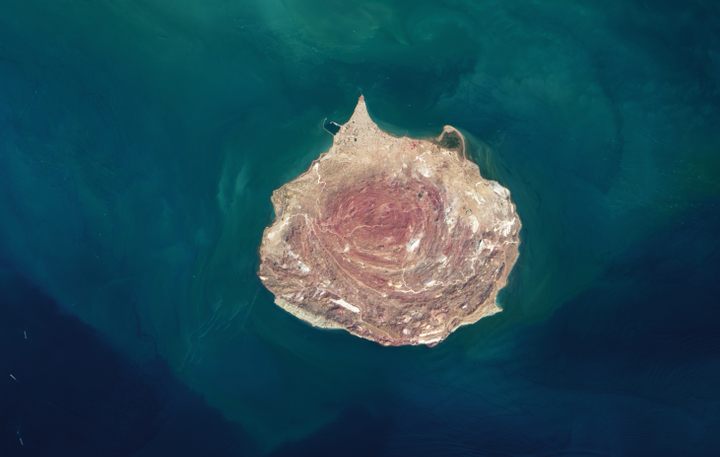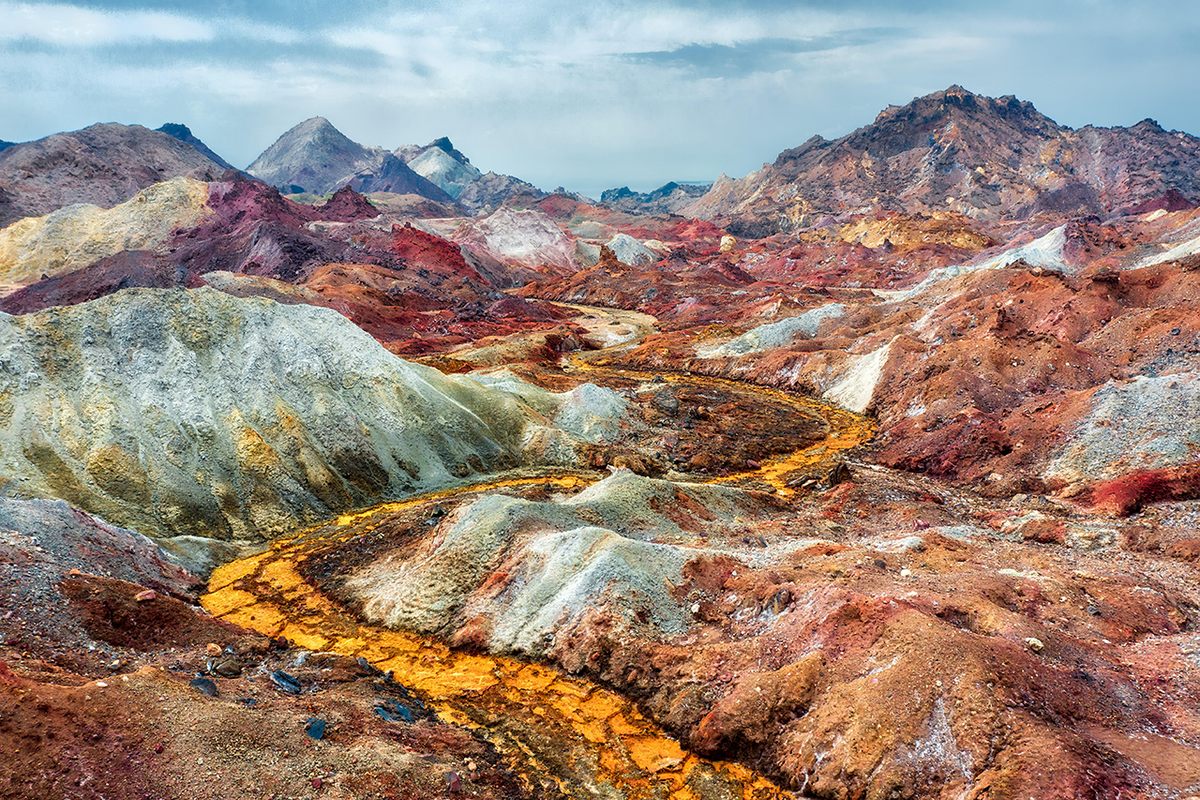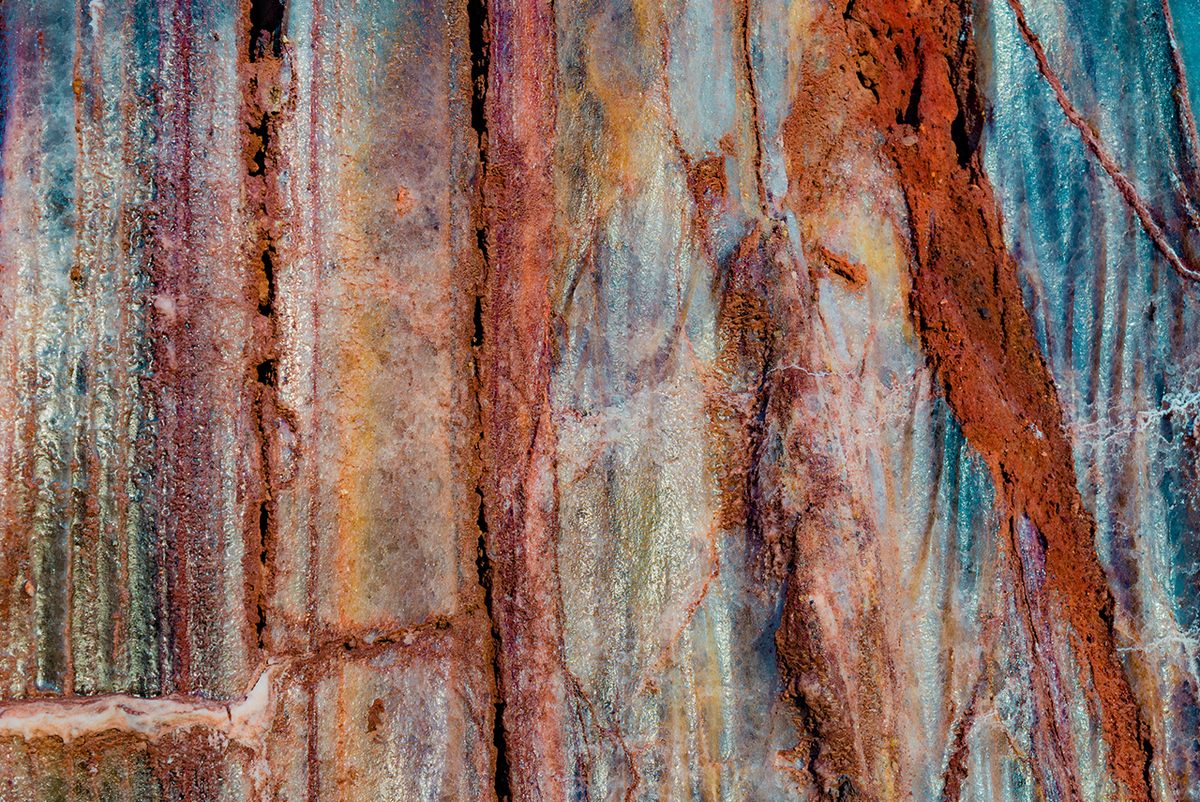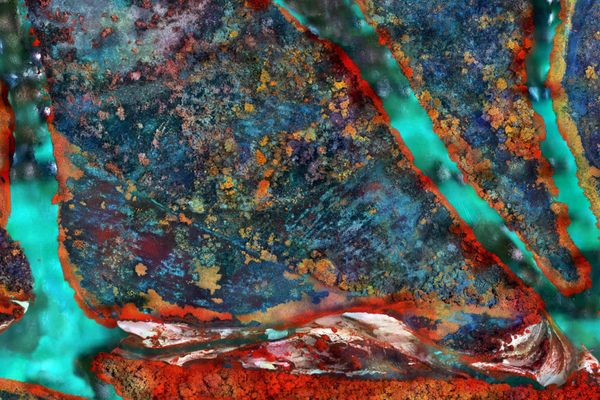
A Glimpse of Iran’s ‘Rainbow Island’ From Above
It’s easy to see why the island attracts artists and geology lovers.
Like a natural pearl resting on a teal velvet bed, Hormuz Island lies a few miles off the coast of Iran, at the mouth of the strait of the same name. From its strategic perch where the Persian Gulf and Gulf of Oman meet, this 16-square-mile island was once a splendid historic trading port, described by a 15th-century Russian merchant as “a vast emporium of all the world.” Its significant location is also very much in the news today, too.
In these quieter days, most of the islands residents are fishermen, and visitors are drawn by the shiploads for its wealth of natural wonders. The amazing settings include coral reefs and a mangrove forest, but the real draw is the land itself. Hormuz Island is one of the biggest salt domes—where a mound of salt layers rise up through overlying layers of rock—in the Persian Gulf. It’s most famous for its eye-catching red-ochre soil and beaches, and its stunningly variegated geological formations.

The colorful elements of the island attract artists and cooks, in addition to geology-lovers. The red soil, once extracted commercially and exported for industrial and cosmetic uses, contains a high percentage of iron-oxide minerals that give it an intensely bloody shade, and mineralization and weathering create and reveal more beautiful minerals such as oligiste, gypsum, apatite, and quartz, which help give the mountains and valleys their eerie tints of red, yellow, purple, and green. Natural salt cave walls show some of these components side by side, and can resemble works of modern art.
Up close and at a distance, “Rainbow Island” is as striking a setting as they come.




































Follow us on Twitter to get the latest on the world's hidden wonders.
Like us on Facebook to get the latest on the world's hidden wonders.
Follow us on Twitter Like us on Facebook